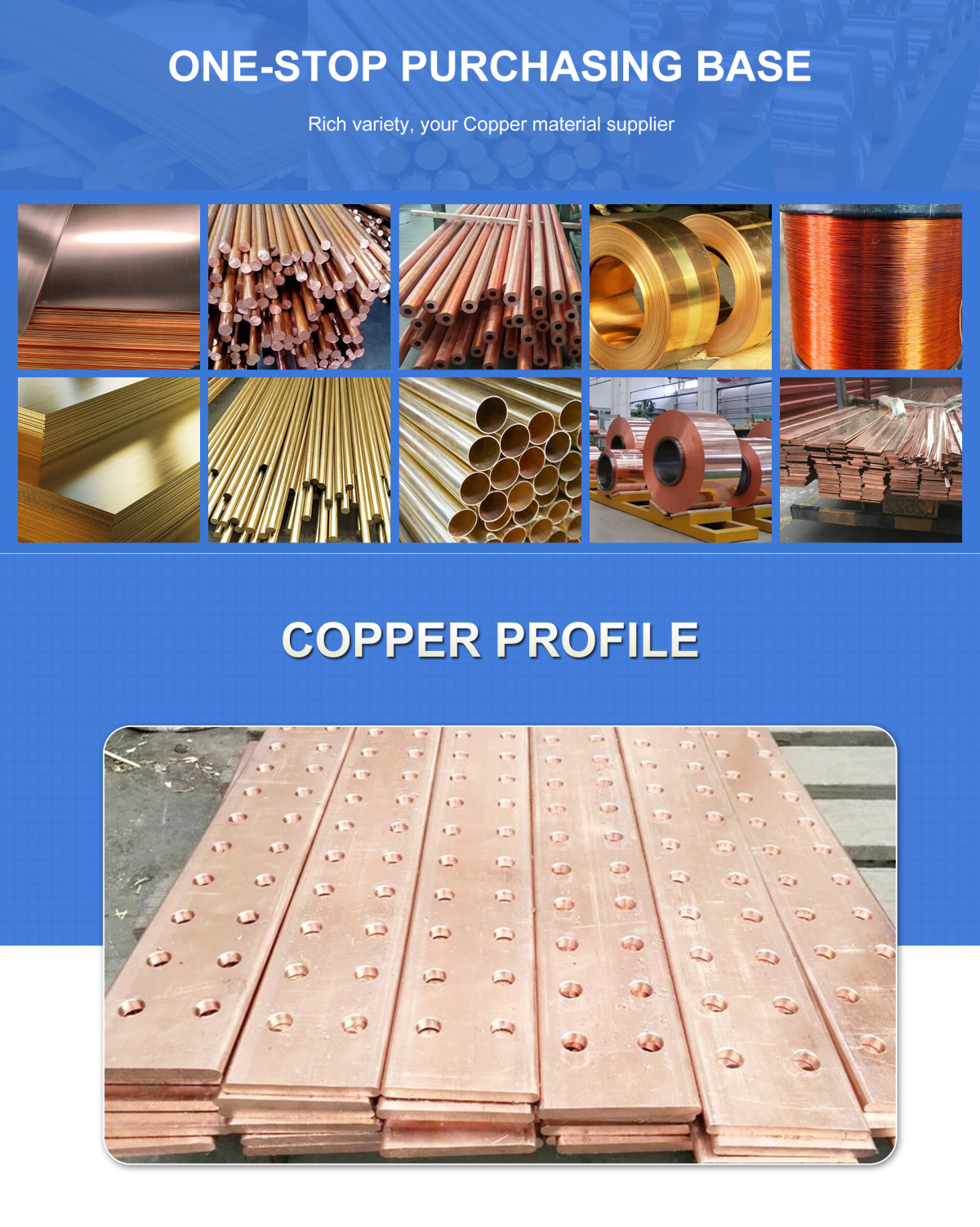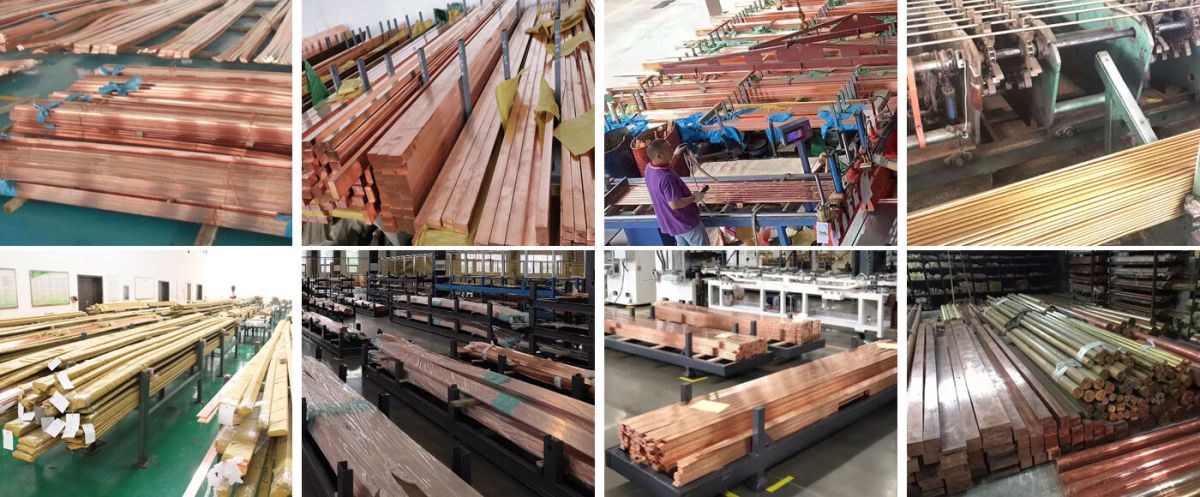
Size range
Diameter range
Conventional bars: diameter covers 1.0-350mm, common specifications are 5-200mm, and some special applications (such as mineral insulated cables) are limited to 3-80mm.
Form and customization
Supports a variety of forms such as round bars, hexagonal bars, and special-shaped bars. Special specifications can be customized.
International standards
Main standard system
ASTM standard: C52100 is widely included in ASTM specifications and is suitable for precision springs, bearings and other scenarios.
China national standard: GB/T 13808-1992 mentions its aluminum bronze characteristics, but it should be noted that the composition difference with ASTM.
Other standards: JIS (such as C5212), DIN, EN, etc. also have corresponding grades.
Chemical composition:
Copper (Cu): balance (usually ≥92%)
Tin (Sn): 6.0%~9.0%
Phosphorus (P): 0.1%~0.35%
Lead (Pb): ≤0.02%
Iron (Fe): ≤0.05%
Aluminum (Al): ≤0.002%
Zinc (Zn): ≤0.2%
Other impurities (such as silicon, antimony, bismuth, etc.): total ≤0.15%
Mechanical properties (state description):
Soft state (annealed state):
Tensile strength (σ<sub>b</sub>): 360~470 MPa
Yield strength (σ<sub>0.2</sub>): 230~270 MPa
Elongation (δ): ≥33%
Hardness (HV): 75~80
Hard state (cold worked state):
Tensile strength (σ<sub>b</sub>): 860~1035 MPa
Yield strength (σ<sub>0.2</sub>): up to 552 MPa
Elongation (δ): ≤5% (plasticity significantly reduced in hard state)
Hardness (HV): 190~210
Other states (such as 1/4 hard, 1/2 hard, etc.):
Tensile strength range: 510~930 MPa, increasing with the degree of work hardening.
Key features:
Wear resistance and friction reduction: Due to the presence of tin and phosphorus, the friction coefficient is low (0.0125 when lubricated), suitable for wear-resistant parts such as bearings and sleeves.
Corrosion resistance: Excellent performance in the atmosphere, fresh water and sea water.
Cold processing performance: It can be strengthened by cold pressure processing, but it is easy to become hot brittle during hot processing.
Electrical conductivity/thermal conductivity: The thermal conductivity is about 54.4 W/(m·K), and the electrical conductivity is moderate.
Welding performance: Supports soldering, copper welding, and arc welding, but submerged arc welding and electroslag welding have poor results.

C52100 copper rod is a high-performance copper alloy mainly composed of copper, tin and phosphorus. Its production process and product advantages are as follows:
I. Production process
1. Melting and continuous casting technology
The "large-tonnage electric furnace smelting-submerged liquid transfer-multi-head multi-stream horizontal continuous casting" process can be used directly to produce scrap copper on a large scale, with low metal loss rate. A single device can simultaneously cast 64 products of different specifications, and the production efficiency is more than 10 times higher than that of traditional processes. The melting temperature is controlled at around 1100℃, and the bag dust removal system is used to reduce smoke emissions.
2. Hot processing and cold processing
The hot forging temperature is recommended to be controlled at 750-780℃, and cold drawing needs to be carried out in stages to avoid material cracking. The annealing temperature is 600-650℃, which can eliminate processing stress and improve plasticity. After forming, the dimensional accuracy is ensured by processes such as drawing and straightening.
3. Key points of quality control
Strictly monitor tin segregation problems, heat treatment requires uniform heating
Hardness after cold working can reach HRB 85 or above, elongation ≥40%
Surface treatment uses chemical nickel plating, electroplating hard chrome and other processes to improve corrosion resistance
II. Product advantages
Excellent mechanical properties
Annealed tensile strength 350-450 MPa, after cold working can reach 600-800 MPa
Yield strength 230-360 MPa, hardness HB 70-120 (HRB 85+ after cold working)
Elastic modulus 110 GPa, fatigue resistance is better than ordinary brass
Special environmental adaptability
Friction coefficient as low as 0.0125 (lubricated)/0.15-0.25 (unlubricated), outstanding wear resistance
Strong corrosion resistance, can be used for a long time in seawater, weak acid and below 200℃
High temperature (400℃) mechanical properties are stable, and the thermal expansion coefficient is low
Processing and economic benefits
Supports a variety of connection methods such as soldering, copper welding, arc welding (except submerged arc welding)
Conductivity 12-15% IACS, taking into account both conductivity and mechanical properties
The price is 40-60% higher than ordinary brass, but more than 30% lower than beryllium copper, with outstanding cost performance
Q1:Do you provide samples? Is it free or extra?
A1:Yes, we can provide samples free of charge and the customer will pay the freight.
Q2:What if I don't have export experience ?
A2:We have reliable forwarder agent which can ship items to you by sea/air/Express to your doorstep. Any way, we will help you choose the most suitable shipping service.
Q3:How long is your lead time?
A3:If it is in stock, it is usually 5-10 days. Or, if there is no inventory, 15 days, depending on the quantity.
Q4:What are your terms of payment?
A4:30% T/T deposit in advance, 70% T/T balance within 5 days after B/L copy, 100%.Irrevocable L/C at sight, 100% Irrevocable L/C after receive B/L 30-120 days, O/A.
Q5:How is your technical support?
A5:We provide lifetime online support through Whatsapp/ Skype/ Wechat/ Email. Any problem after delivery, we will offer you call anytime.
Welcome To Your Inquiry
What can we help you?
RELATED PRODUCTS












